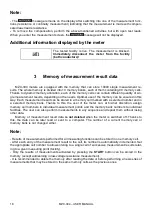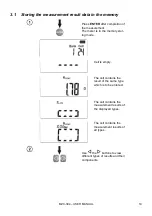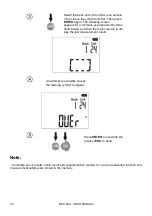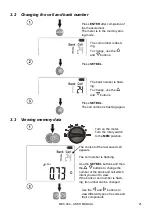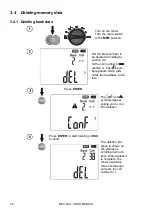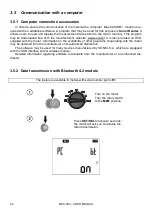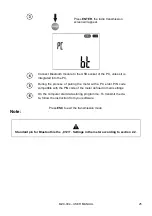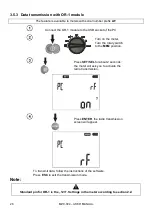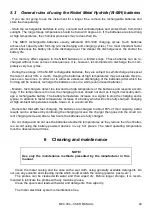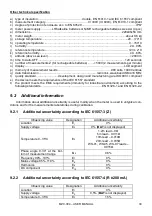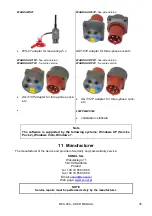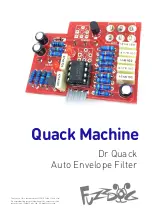
MZC-304
– USER MANUAL
29
5.3
General rules of using the Nickel Metal Hydride (Ni-MH) batteries
- If you are not going to use the instrument for a longer time, remove the rechargeable batteries and
store them separately.
- Store the rechargeable batteries in a dry, cool and well ventilated place and protect them from direct
sunlight. The long storage temperature should be below 30 degrees C. If the batteries are stored long
at high temperatures, the chemical processes may reduce their life.
- The NiMH rechargeable batteries usually withstand 500-1000 charging cycles. Such batteries
achieve full capacity after forming (2-3 discharging and charging cycles). The most important factor
which influences the battery life is the discharge level. The deeper the discharge level, the shorter the
battery life.
- The memory effect appears in the NiMH batteries in a limited scope
.
These batteries can be re-
charged without more serious consequences. It is, however, recommended to discharge them com-
pletely every few cycles.
- During the storage of the Ni-MH rechargeable batteries, they are subject to self-discharge process at
the rate of about 30% a month. Keeping the batteries at high temperatures may accelerate this pro-
cess even two times. In order not to allow an excessive discharging of the batteries (after which the
forming will be needed), recharge the batteries once in a while (even unused batteries).
- Modern, fast chargers detect too low and too high temperature of the batteries and respond accord-
ingly. If the temperature is too low, the charging process should not start as it might irrevocably dam-
age a rechargeable battery. The battery temperature increase is a signal to stop the charging and is
typical. In addition to faster temperature increase of a battery which will not be fully charged, charging
at high ambient temperatures results, however, in a reduced life.
- Remember that with fast charging, the batteries are charged to about 80% of their capacity; better
results can be achieved by continuing the charging process: the charger then goes into the small cur-
rent charging mode and after a few hours the batteries are fully charged.
- Do not charge and do not use the batteries at extreme temperatures as they reduce the life of batter-
ies. Avoid using the battery-powered devices in very hot places. The rated operating temperature
must be observed at all times.
6
Cleaning and maintenance
NOTE!
Use only the maintenance methods presented by the manufacturer in this
manual.
Clean the meter casing and the case with a wet cloth, using generally available detergents. Do
not use any solvents and cleaning media which could scratch the casing (powder, paste, etc.).
The probes can be cleaned with water and then wiped dry. Before longer storage, it is recom-
mended to lubricate the probes with any machine grease.
Clean the spools and leads with water and detergents, then wipe dry.
The meter electronic system is maintenance free.




